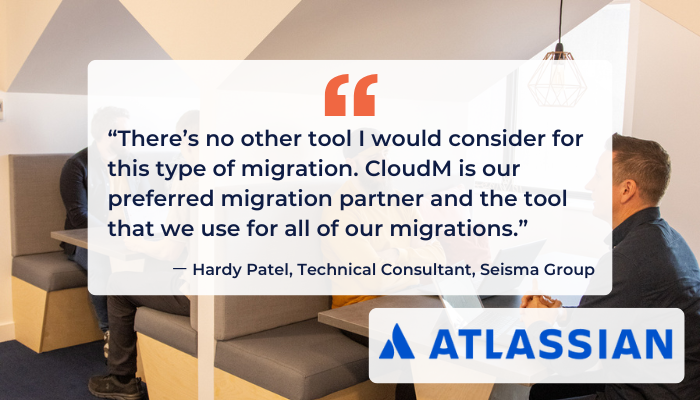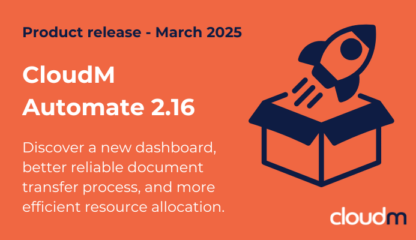
Speak to our migration specialists today
The ultimate guide to Microsoft 365 tenant migrations: Strategies, best practices, and expert insights for 2024
This comprehensive Microsoft 365 tenant migration guide will delve into the intricacies, providing you with expert insights, best practices, and strategies to ensure a seamless data migration experience.





In today’s rapidly evolving digital landscape, organizations are constantly seeking ways to optimize their IT infrastructure and enhance collaboration. Microsoft 365 has emerged as a leading platform for businesses of all sizes, offering a comprehensive suite of productivity tools and cloud services. However, as companies grow, merge, or restructure, the need for Microsoft 365 tenant migrations becomes increasingly common.
Understanding Microsoft 365 tenant migrations
What is a Microsoft 365 tenant?
A Microsoft 365 tenant is a dedicated instance of Microsoft 365 services assigned to an organization. It encompasses all the users, data, and configurations associated with that organization’s Microsoft 365 subscription.
Defining tenant migration
Tenant migration refers to the process of moving data, users, and configurations from one Microsoft 365 tenant to another. This can be due to various reasons, such as:
- Company mergers and acquisitions
- Divestitures or spin-offs
- Consolidation of multiple tenants
- Rebranding or domain changes

1 million
According to recent statistics from Microsoft, over 1 million companies worldwide use Microsoft 365, with tenant migrations becoming increasingly common as businesses evolve.
Key considerations before initiating a tenant migration
Before embarking on a Microsoft 365 tenant migration, it’s crucial to consider several factors:
-
Migration scope and objectives
- Clearly define what needs to be migrated (e.g., Exchange Online, SharePoint, Teams)
- Establish migration priorities and timelines
- Set clear success criteria for the migration
-
Data assessment and inventory
- Conduct a thorough inventory of data across all Microsoft 365 services
- Identify any legacy or redundant data that can be archived or deleted
- Assess data sensitivity and compliance requirements
-
User impact and communication
- Develop a comprehensive communication plan for all affected users
- Plan for potential downtime and its impact on business operations
- Create a strategy for user training on any new processes or features
-
Technical considerations
- Evaluate network bandwidth and infrastructure requirements
- Assess any customizations or third-party integrations that may be affected
- Determine the need for coexistence during the migration process
-
Compliance and security
- Ensure compliance with data protection regulations (such as GDPR or CCPA)
- Plan for maintaining and transferring security configurations
- Consider any industry-specific compliance requirements
Types of Microsoft 365 tenant migrations
There are several approaches to Microsoft 365 tenant migrations, each suited to different scenarios:
1. Cutover migration
- Suitable for small to medium-sized organizations
- All data and users are migrated in a single operation
- Minimal coexistence period required
3. Hybrid migration
- Combines -on-premises and cloud environments during migrationVerify content integrity and completeness
- Provides flexibility for organizations with complex infrastructures
- Enables long-term coexistence if needed
2. Staged migration
- Ideal for larger organizations or complex environments
- Users and data are migrated in batches over time
- Allows for a more controlled transition with extended coexistence
4. Third-party tool migration
- Utilizes specialized migration tools such as CloudM Migrate for enhanced capabilities
- Often provides additional features for complex scenarios
- Can offer improved performance and detailed reporting
Step-by-step guide to Microsoft 365 tenant migration
Follow these steps to ensure a successful tenant migration:
1. Pre-migration planning
- Assemble a migration team with clear roles and responsibilities
- Develop a detailed project plan with milestones and dependencies
- Create a risk assessment and mitigation strategy
3. Data cleanup and optimization
- Archive or delete unnecessary data to reduce migration scope
- Standardize data formats and structures where possible
- Resolve any existing issues in the source environment
5. Pilot migration
- Select a representative sample of users and data for initial migration
- Document any issues encountered and refine the migration process
- Gather feedback from pilot users to inform the full-scale migration
7. Post-migration tasks
- Verify data integrity and user access in the new tenant
- Update DNS records and external service configurations
- Decommission the old tenant once the migration is complete
2. Environment preparation
- Ensure both source and destination tenants meet all prerequisites
- Set up necessary Azure AD Connect sync for hybrid scenarios
- Configure network settings for optimal migration performance
4. Migration tool selection and configuration
- Choose appropriate migration tools based on your specific requirements
- Configure and test the selected tools in a controlled environment
- Develop automation scripts for repetitive tasks, if applicable
6. Full migration execution
- Execute the migration in phases according to the established plan
- Monitor progress and performance throughout the process
- Address any issues promptly to minimize disruption
8. User support and training
- Provide comprehensive training on any new features or processes
- Establish a dedicated support channel for migration-related issues
- Gather user feedback to identify and address any lingering concerns
Best practices for successful tenant migrations
Implement these best practices to optimize your migration process:
Thorough planning
Invest time in comprehensive planning to anticipate and mitigate potential issues.
Clear communication
Keep all stakeholders informed throughout the migration process.
Data validation
Implement rigorous data validation checks before, during, and after migration.
Performance monitoring
Continuously monitor migration performance and adjust as needed.
Security first
Maintain robust security measures throughout the migration process.
Documentation
Maintain detailed documentation of the entire process for future reference.
Common challenges and solutions
Be prepared to address these common migration challenges:
Data Loss or Corruption
Solution: Implement multiple data validation checkpoints and maintain comprehensive backups.
User Disruption
Solution: Schedule migrations during off-peak hours and provide clear communication and support.
Performance Issues
Solution: Optimize network settings, use migration tools with throttling capabilities, and consider a phased approach for large migrations.
Compliance Concerns
Solution: Work closely with your legal and compliance teams to ensure all regulatory requirements are met throughout the migration.
Future trends in Microsoft 365 tenant migrations
As technology evolves, so do migration practices. Keep an eye on these emerging trends:
AI-assisted migrations
Machine learning algorithms to optimize migration processes and predict potential issues.
Enhanced automation
Increased use of PowerShell and other automation tools for more efficient migrations.
Cross-cloud migrations
Growing need for migrations between different cloud platforms, not just within Microsoft 365.
Zero-downtime migrations
Advancements in migration technologies to minimize or eliminate user disruption.
Conclusion
Microsoft 365 tenant migrations, while complex, are often necessary for organizations to adapt to changing business needs and technological landscapes. By following the strategies, best practices, and expert insights outlined in this guide, you can navigate the challenges of tenant migration with confidence and ensure a smooth transition for your organization.
Remember that each migration is unique, and it’s crucial to tailor your approach to your specific organizational needs and constraints. Stay informed about the latest Microsoft 365 updates and migration tools to leverage new capabilities as they become available.
As you embark on your tenant migration journey, consider partnering with experienced professionals who can provide additional guidance and support throughout the process. With careful planning, execution, and ongoing optimization, your Microsoft 365 tenant migration can be a catalyst for improved collaboration, productivity, and innovation within your organization.
At CloudM, we have an experienced team of migration experts who are looking forward to help ensure your project is completed successfully.
Book a call with our migration specialists today
















